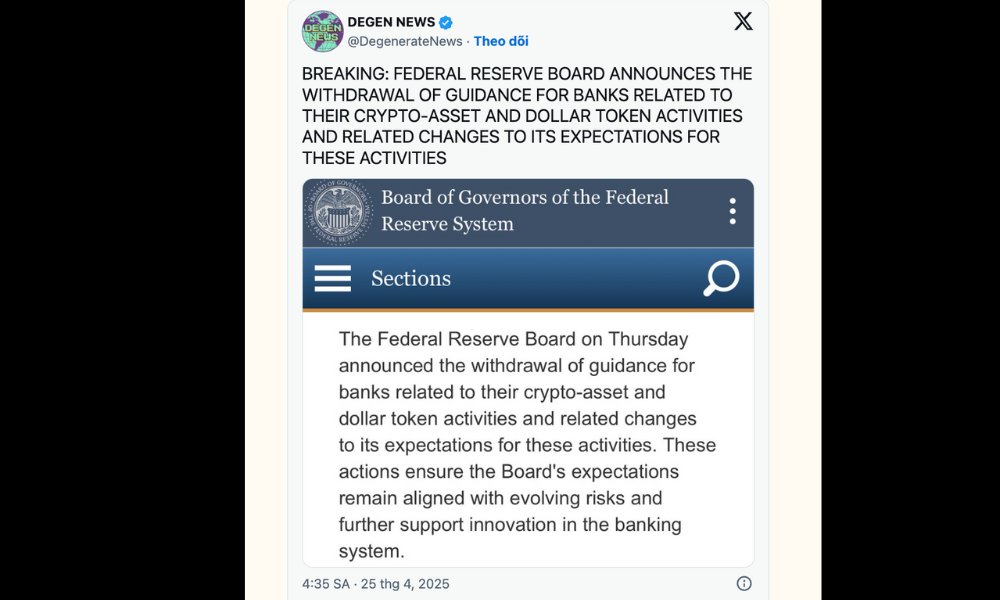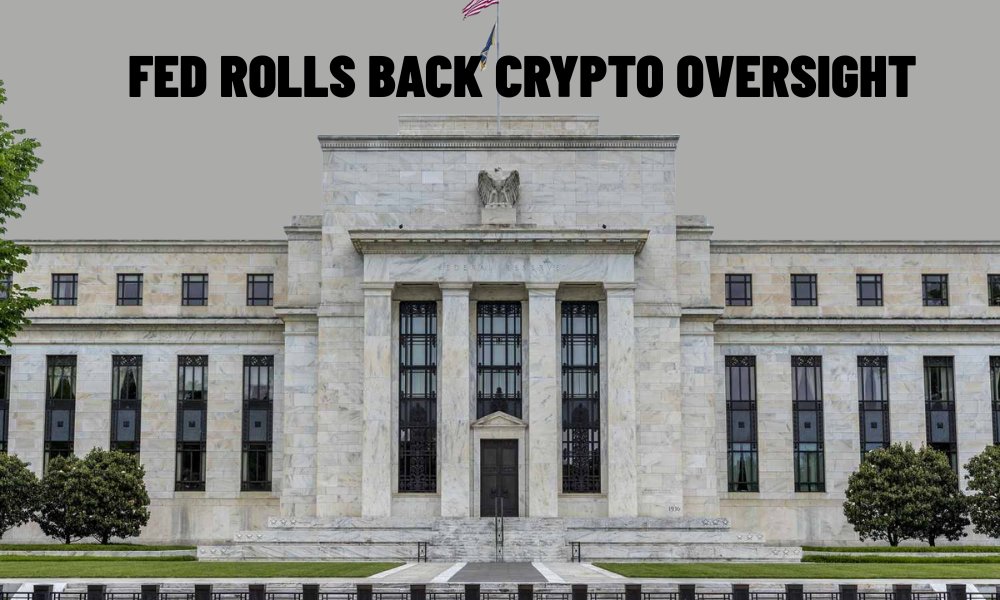On April 25, 2025, the U.S. Federal Reserve (Fed) made a landmark decision to rescind two key guidance documents issued in 2022 and 2023, which previously governed the involvement of U.S. banks in crypto assets and dollar tokens, such as stablecoins. This move marks a significant shift in the regulatory landscape, granting banks greater autonomy to engage with blockchain technology, stablecoins, and Web3 applications. Coupled with parallel actions by other major regulators, this development signals a new era of flexibility and innovation in the U.S. financial sector’s approach to digital assets.
Dismantling Pre-Approval Barriers
The 2022 guidance required state member banks to notify the Fed in advance before engaging in any activities related to crypto assets. Similarly, the 2023 guidance mandated a pre-approval process for banks seeking to issue, hold, or transact with dollar tokens—stablecoins pegged to the U.S. dollar, such as USDC or USDT. Both documents have now been fully withdrawn, eliminating the need for banks to seek prior regulatory approval for such activities.

This shift replaces the rigid pre-approval framework with a more streamlined supervisory approach. The Fed will now oversee crypto-related activities through its standard monitoring processes, akin to those applied to traditional financial operations. By reducing administrative burdens, the Fed aims to foster an environment where banks can experiment with blockchain technology and digital assets more freely, aligning with the rapid evolution of the crypto market.
Empowering Banks with Greater Autonomy
The withdrawal of these guidelines places significant responsibility on banks to self-regulate their crypto endeavors. Banks are now free to pursue activities in the digital asset space, provided they adhere to robust internal risk management protocols and comply with existing regulations. The onus falls on bank leadership, risk management teams, and compliance units to assess the suitability of crypto-related initiatives and ensure effective governance.
This newfound autonomy eliminates the excuse of “regulatory uncertainty” that some banks previously cited to avoid engaging with crypto assets. As stablecoins gain traction in payments and decentralized finance (DeFi), and as Web3 applications proliferate, banks are now incentivized to innovate and compete in this burgeoning sector.
Coordinated Regulatory Shift
The Fed’s actions are not isolated. The Office of the Comptroller of the Currency (OCC) and the Federal Deposit Insurance Corporation (FDIC) have also rescinded joint statements from 2023 that cautioned banks about the risks of crypto exposure. These statements were widely perceived as barriers to integrating digital assets into mainstream finance. By withdrawing them, the OCC and FDIC are aligning with the Fed’s push to create a more permissive environment for banks to explore crypto.
This coordinated rollback reflects a broader recognition among U.S. regulators that overly restrictive policies could stifle innovation and cede competitive ground to other jurisdictions with more progressive frameworks. The move is particularly timely as global adoption of stablecoins and blockchain-based solutions continues to accelerate.
Implications for the Crypto Market
The Fed’s decision is poised to catalyze significant activity in the U.S. crypto market. Banks, previously hesitant due to regulatory constraints, may now accelerate their adoption of stablecoins for cross-border payments, tokenized assets for settlement, and blockchain for operational efficiencies. The growing prominence of stablecoins like USDC and USDT in global transactions underscores the urgency for banks to integrate these assets into their offerings.
However, the absence of new regulatory guidelines to replace the repealed ones creates a temporary legal gray area. While banks have greater freedom, they must navigate this space cautiously, balancing innovation with rigorous risk management. The U.S. Congress has yet to pass comprehensive legislation on digital assets, leaving banks to operate under existing financial laws and their internal frameworks.

SEC’s Role in Clarifying the Path Forward
The Securities and Exchange Commission (SEC) is also contributing to this evolving landscape. The agency has signaled its intent to develop a clearer regulatory framework for crypto, confirming that traditional stablecoins and memecoins will not be classified as securities. This distinction provides banks and other financial institutions with greater legal clarity, reducing the risk of regulatory overreach and enabling more confident engagement with digital assets.
The SEC’s proactive stance complements the Fed’s rollback, creating a more cohesive regulatory environment that supports innovation while addressing investor protection and market stability.
A New Chapter for U.S. Banks and Crypto
The Fed’s decision to withdraw its crypto oversight guidelines, alongside similar moves by the OCC and FDIC, marks a pivotal moment for the U.S. financial sector. By empowering banks to take the lead in crypto innovation, regulators are fostering a competitive landscape where blockchain and digital assets can thrive. However, this increased autonomy comes with heightened responsibility, as banks must navigate a still-fragmented regulatory framework and ensure robust risk controls.
As the crypto market continues to mature, with stablecoins and Web3 applications driving real-world use cases, U.S. banks are now better positioned to seize these opportunities. While legislative clarity from Congress remains a critical next step, the current regulatory shift signals a strong commitment to integrating digital assets into the financial mainstream. For market participants and observers, this is a clear sign that the U.S. is ready to embrace the future of finance—one block at a time.
